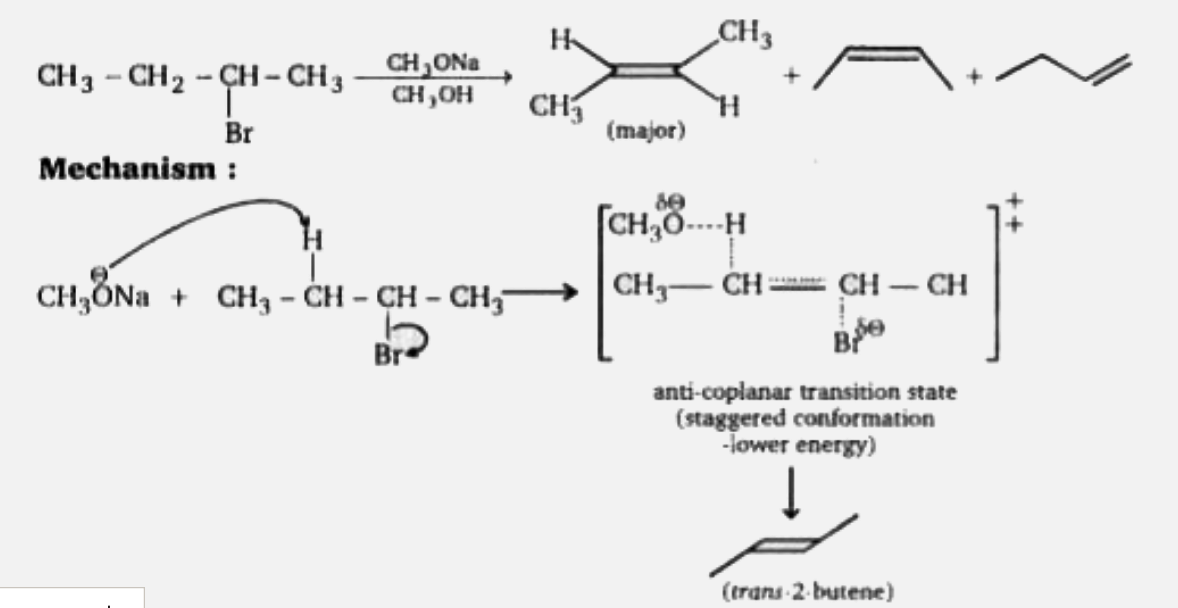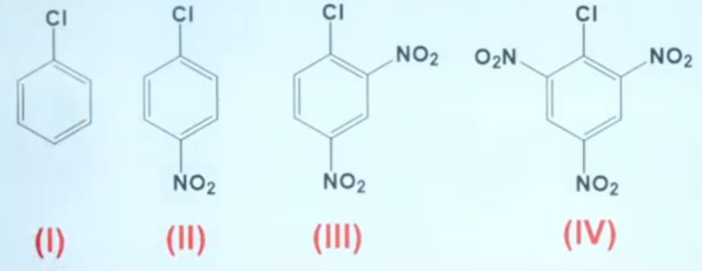When a nucleophile encounters a ketone, the site of attack is :Solution in Kannada
A) the carbon atom of the carbonyl
B) the oxygen atom of the carbonyl
C) both the carbon and oxygen atoms, with equal probability
D) no attack occurs as ketones do not react with nucleophiles
The correct Answer is:A
R−O∣∣Cδ⊕−R more positive on carbon of carbonyl.
Topper's Solved these Questions
- ALDEHYDES AND KETONESBOOK - MS CHOUHANCHAPTER - ALDEHYDES AND KETONESEXERCISE - LEVEL-2
20 Videos
- ALCOHOL,ETHERS AND EPOXIDESBOOK - MS CHOUHANCHAPTER - ALCOHOL,ETHERS AND EPOXIDESEXERCISE - SUBJECTIVE PROBLEMS
1 Videos
- ALKYL HALIDES (ELIMINATION REACTION) BOOK - MS CHOUHANCHAPTER - ALKYL HALIDES (ELIMINATION REACTION) EXERCISE - LEVEL-2
25 Videos
Similar Questions
Select the best choice for example (A to L) from the examples (a to n) given below. Write your choice in the box given.


View Solution
Maximum number of moles of Ac2O consumed by reactant (A) is :
View SolutionComprehension
E2 raction → Elimination bimolecular
In the general mechanism of the E2 reaction a strong base abstract a proton on a carbon atom adjacent to the one of the leaving group. As the abstracts a proton , a double bond forms and the leaving group leaves.

Identify the rate of reaction of given compounds in E2 reaction:

View SolutionA nucleophilic reagent will readily attack
View SolutionA nucleophilic reagent will readily attack
View SolutionAldehydes and ketones are amphoteric. Thus they can act both as acids and bases. Under acidic conditions, the carbon of the protonated canbonyl group is much more electrophilic, reacting even with weak nucleopphilie. Carbonyl compound gives nucleophilic addition reaction. In this reaction the nucleophilic attack proceeds the elecrophilic attack.
Carbonyl compounds gives nucleophilic addition with
View SolutionThe indicated atom is not a nucleophilic site in -
View SolutionThe first step in the attack of nucleophile on the alkene is?
View SolutionThe second step in the attack of nucleophile on the alkene is?
View SolutionIn Sodium Bisulphite the attacking nucleophile is
View SolutionBasing on the nature of the attacking site in the substrate, attacking reagents are classified as nucleophiles and electrophiles
View SolutionIncreasing strength towards nucleophilic attack?

View SolutionA nucleophilic reagent would readily attack:
View SolutionGive the products and mechanism for each of the following reactions. Explain why nucleophilic attack on the epoxide occurs at different sites in the two reactions.

View SolutionElectrophile and Nucleophile (Attacking and Reaction Reagent)
View SolutionHere nucleophilic Ph^- attacks on
View Solution
